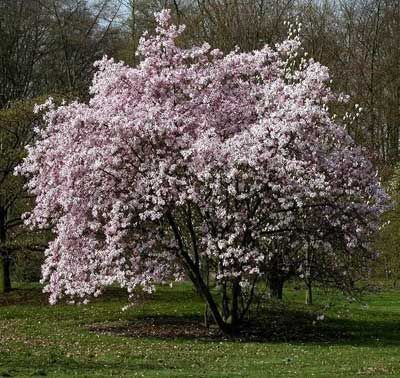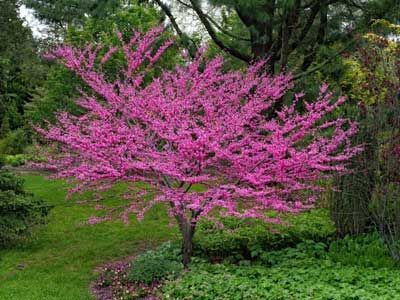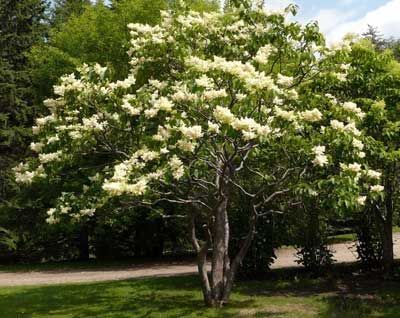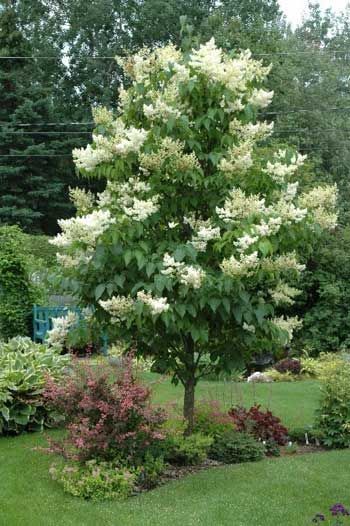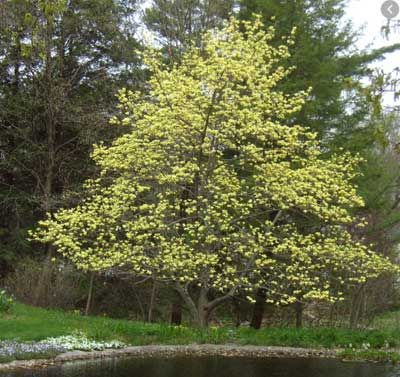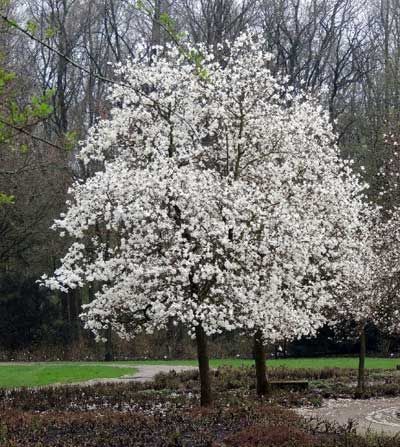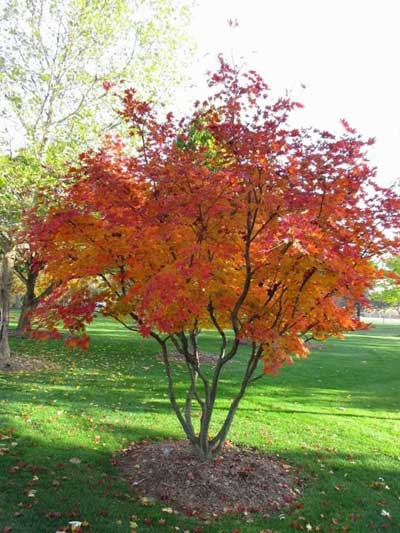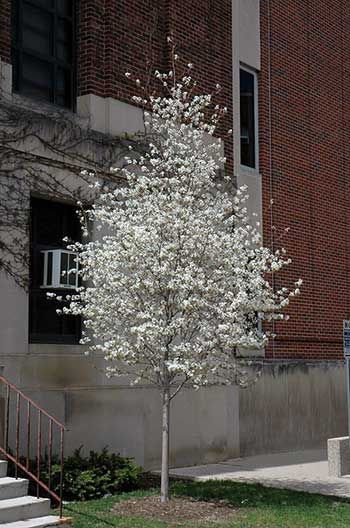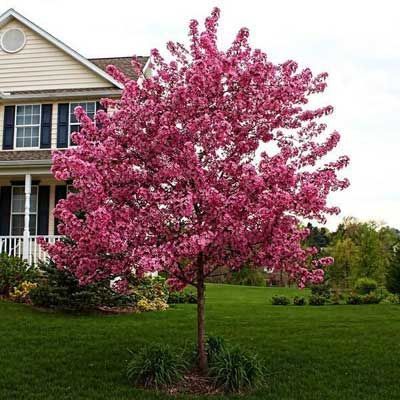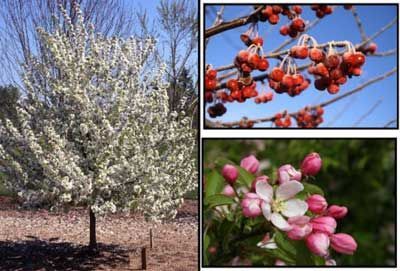In this blog post, we’ll explore some of our favorite options for a ornamental flowering trees that do well in Minnesota. These trees can be used as a specimen or key plant as shown in the diagram above and also in the lawn spaces. Flowering ornamental trees can help provide interest throughout the growing season with their spectacular flowering in the spring, there size and shape during the summer months and in the fall as well their leaves turn shades of yellows, orange or red.
Our Pics: Top 5 Flowering Ornamental Trees to Use in MN
#1 Serviceberry (native to MN)
The serviceberry tree is our top selection, because of it has two of the most desirable traits for an ornamental tree in MN: it has both wonderful white spring flowers and beautiful red/orange fall colors. Great fall leaf color is fairly unique for a flowering tree in MN, which really makes the serviceberry a great option for adding seasonal interest. These trees hold their berries after flowering rather than dropping them on the ground and these hanging berries attract many types of birds in the fall. ‘Autumn brilliance’ is our preferred multi-stem variety and we like the ‘Spring flurry’ variety best for the single stem growth type, due to its strong central leader trunk and taller canopy, which makes it easier to mow around/under when planted in the lawn. Both varieties have similar white flowers in springtime, both have great fall leaf color and both grow to roughly the same mature size of 15' wide and 15'-20' tall.
‘spring flurry’ serviceberry ‘autumn brilliance’ serviceberry (multi-stem version)
Most of the new varieties are disease resistant and have persistent fruit (which means their berries are small and don’t fall to the ground’ making them far less messy. There are so many sizes/shapes and flower color options available. Crab trees are great for pollinating insects and birds and also attract birds in fall/winter, which eat the small crab apples. There are many other good ones out there to choose from, but here are our two great options to consider: ‘prairie-fire’ crab is disease resistant with persistent fruit and ‘sugar thyme’ crab has both of those traits as well.
‘prairie-fire’ crab ‘sugar thyme’ crab
#3 Redbud Tree
(native to MN)
Red bud trees are truly spectacular in the spring time because of their amazing pink/fuchsia flowers, that uniquely appear all along their the branches rather than only at the tips of branches like most other trees. The heart shaped leaves on these trees have a nice buttery yellow fall color as well. Redbud trees are available in single stem and multi-stem growth types so there are lots of options for placements in landscapes. Redbud trees do well in full sun to partial shade.
Northern Redbud tree (single stem) Northern Redbud tree (multi-stem)
Japanese tree lilacs Fast growing with many varieties available offering different sizes/shapes. Available in single-stem and multi-stem growth types. Flowers in late spring early summer, while most other options listed above flower in early spring. They flower much better when planted in full sun
Japanese tree lilac (multi-stem) Japanese tree lilac (single-stem)
Magnolias are certainly one of the most spectacular flowering trees that is cold hardy in our Minnesota climate. These trees have large flowers that bloom early in the spring, with several flower color options available. There are several varieties available that offer different sizes and growth types to fit needs of your space. Many varieties are available in single-stem and multi-stem growth types as well.
We think that these 3 varieties are great options to consider: ‘butterflies’, ‘Leonard Messel,’ and ‘Merrill.’ All 3 of these tree types are large enough to plant in lawn spaces and eventually mow beneath and will also do well within plant beds. There are also other varieties of magnolia trees with smaller grow habits that we consider as being more like a large flowering shrubs than traditional ornamental tree when it comes to their usage in landscape spaces.
‘butterflies’ magnolia 'merill' magnolia
‘Leonard Messel’ magnolia
Hopefully these options give you some inspiration to select your favorite flowering tree. Just like you, we love seeing our landscapes come to life in the spring and fall with their beautiful colors. If you're interested in more professional landscaping advice, the landscape designers here at KG Landscape can help you select the best plants for your yard and design a wonderful layout that adds curb appeal or helps create a fantastic backyard getaway.
Call us call or message us via our quote form to get started.
